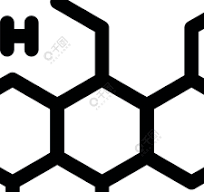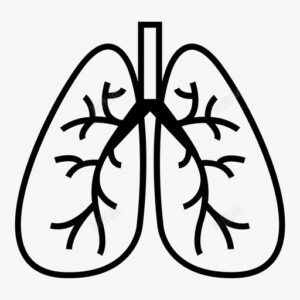Hydroxychloroquine Sulfate Tablets
Effects and efficacy:
It is mainly used for rheumatoid arthritis, juvenile chronic arthritis, systemic and discoid lupus erythematosus, as well as skin lesions caused or aggravated by sunlight (photosensitive rash), oral lichen planus, actinic cheilitis, Sjögren’s syndrome and other diseases. When chloroquine is not available, hydroxychloroquine sulfate can be used to treat and prevent malaria.
Usage and dosage:
Treatment of rheumatoid arthritis and lupus erythematosus: initial dose, 400 mg per day, taken in divided doses; maintenance dose is 200-400 mg per day, daily dose does not exceed 6.5 mg/kg (calculated from ideal body weight rather than actual body weight) or 400 mg, or even less. If the treatment of adolescent patients is ineffective for 6 months, the drug should be discontinued. Prevention of malaria: Start taking the drug 2 weeks before entering the malaria-endemic area, take 400 mg orally, and then take 400 mg once a week. Take the drug at the same time every week until 8 weeks after leaving the endemic area. If the drug is not started 2 weeks before entering the endemic area, the first dose should be doubled (800 mg, taken in 2 doses, 6 hours apart). Treatment of acute malaria: 800 mg for the first time, 400 mg orally every 6-8 hours thereafter; on the 2nd-3rd day, once a day, 400 mg at a time. Children aged 6 years and above for rheumatoid arthritis, chronic arthritis, lupus erythematosus, and skin diseases: The lowest dose should be used, and the daily dose should not exceed 6.5 mg/kg (calculated from ideal body weight rather than actual body weight) or 400 mg. Children should take the medicine under the guidance of a doctor and under the supervision of an adult. Prevention of malaria: Start taking the medicine 2 weeks before entering the malaria-endemic area, 6.5 mg/kg once (should not exceed 400 mg), once a week until 8 weeks after leaving the endemic area. Treatment of acute malaria: The first dose is 13 mg/kg (not to exceed 800 mg), and the second dose of 6.5 mg/kg (not to exceed 400 mg) is taken 6 hours later. The same dose is used thereafter, and the third dose is taken 18 hours after the second dose, and the fourth dose is taken 24 hours after the third dose. Long-term use of the drug in children may cause abnormal excitement, mood changes, mental disorders, neurological deafness, convulsions, ataxia, extraocular muscle paralysis, skeletal muscle weakness, loss or reduction of tendon reflexes, etc. Note: Each dose should be taken with meals or milk. Hydroxychloroquine has a cumulative effect and takes several weeks to exert its beneficial effects, while mild adverse reactions may occur relatively early. If rheumatic diseases are not improved after 6 months of treatment, treatment should be terminated. When treating photosensitive diseases, treatment should be given only when exposure to sunlight is maximized.
Adverse reactions:
Gastrointestinal: Anorexia, nausea, vomiting, diarrhea, and abdominal cramps may occur. There are abnormal liver function, and there are even individual reports of fulminant liver failure in foreign literature. Allergic reactions: urticaria, angioedema, and bronchospasm, etc. Cardiovascular system: Cardiomyopathy is rarely reported and only occurs in patients who use hydroxychloroquine in large doses. When cardiac conduction abnormalities (bundle branch block/atrioventricular block) and bilateral ventricular hypertrophy are found, chronic toxicity of the drug should be suspected. Recovery may occur after discontinuation of the drug. Central nervous system: Rare, including irritability, nervousness, mood changes, nightmares, psychosis, headache, dizziness, vertigo, tinnitus, nystagmus, sensorineural hearing loss, convulsions, ataxia, etc. Neuromuscular: Skeletal muscle paralysis, myopathy or neuromyopathy leads to progressive weakness and atrophy of proximal muscle groups, which may be accompanied by mild paresthesia, weakened tendon reflexes and abnormal nerve conduction. Eye effects Ciliary body: Accommodation disorder, blurred vision may occur, this reaction is dose-dependent and can be reversed after discontinuation of the drug. Cornea: Transient corneal edema and opacity, decreased corneal sensitivity. Corneal changes with or without symptoms (blurred vision, halos, photosensitivity) are common, but reversible. Corneal deposits can appear as early as 3 weeks after the use of the drug. However, the incidence of corneal lesions and adverse visual reactions of hydroxychloroquine is much lower than that of chloroquine. Retinal: macula, edema, atrophy, abnormal pigmentation (from mild punctate to diffuse), loss of foveal reflex, prolonged recovery time of the macula after exposure to bright light (photostress test), increased threshold for red light in the macula, paramacula and peripheral retinal areas. Other fundus changes include: optic disc pallor and atrophy, retinal artery attenuation, fine granular pigmentation around the retina, and choroidal changes (convex choroid) in advanced disease. Visual field loss: paracentral scotoma, central scotoma and decreased visual acuity, rarely with narrowing of the visual field and abnormal color vision. The most common visual symptoms of retinopathy include reading and visual impairment (missing words, letters or parts of objects), photophobia, blurred distance vision, loss of central or peripheral visual field, flashes and streaks in front of the eyes. Retinopathy is dose-dependent and often appears after several months (rarely) to several years of daily medication. Patients with retinal changes may be asymptomatic (with or without visual field changes), and rarely have distance vision or visual field loss without retinal changes. Retinopathy may also progress after discontinuation of medication. In a certain number of patients, early retinopathy (macular pigment deposition sometimes combined with central visual field defects) can be alleviated or subsided after drug withdrawal. Paracentral blind spots to red sight marks indicate early retinal dysfunction, which is often restored after drug withdrawal. Only a few patients taking hydroxychloroquine develop retinopathy. Retinal pigment deposition is mainly found during regular ophthalmological examinations, and visual field defects occur in some patients. Foreign literature reports that one patient developed delayed retinopathy leading to blindness one year after stopping hydroxychloroquine treatment. Skin: graying of hair, hair loss, pruritus, changes in skin and mucous membrane pigmentation, photosensitivity and skin lesions (urticaria, erythema multiforme, lichenoid changes, maculopapular rash, purpura, centrifugal annular erythema, Stevens-Johnson syndrome, acute generalized exanthematous pustular disease and exfoliative dermatitis). Blood system: multiple blood system abnormalities, such as aplastic anemia, agranulocytosis, leukopenia, anemia, thrombocytopenia (hemolysis occurs in patients with G-6-PD deficiency). Others: weight loss, fatigue, worsening of porphyria and non-photosensitive psoriasis. Studies have shown that the above adverse reactions do not occur in every 4-aminoquinoline compound when used for a long time, but may occur in one or more drugs, so attention should be paid when using this type of drug. The types and frequency of adverse reactions of different compounds are different.
Drug contraindications:
Allergic to this product is prohibited for newborns. Use with caution during pregnancy. Use with caution during lactation. Use with caution in liver and kidney dysfunction.
Share:
Products
Our offers
Health Classification
Let us work together to protect precious health































